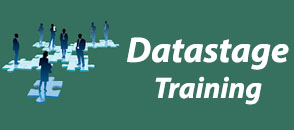


![]() Online Training
Online Training
![]() Corporate Training
Corporate Training
![]() ON Demand
ON Demand
Datastage is a popular ETL tool from IBM. This 50 Hours training will cover all the stages in the tool from an ETL developer perspective. All sessions have hands on sessions with scenario based exercises to help participants mimic the real world setup.
This is recommended to anyone with basic SQL knowledge who wishes to be an ETL developer.
Datastage training course is designed to introduce advanced job development techniques in DataStage V8.5. Data Ware Housing, Data Modeling, ETL Design Process and Data Stage Installation. This is followed by deep drive on Data Stage Administrator, Data Stage Director and Data Stage Designer.
Expert Instructors
Practical Implementation
Real- time Case Studies
Certification Guidance
Resume Preparation
Placement Assistance
Copyright 2018 © www.unitedglobalsoft.com . All right reserved | Sitemap | Privacy Policy | Terms Of Services